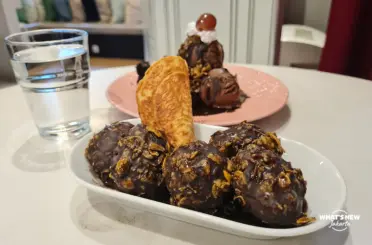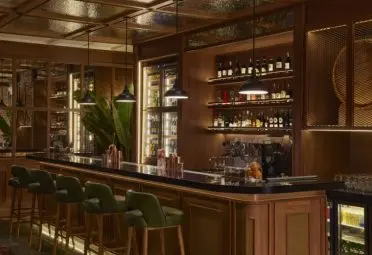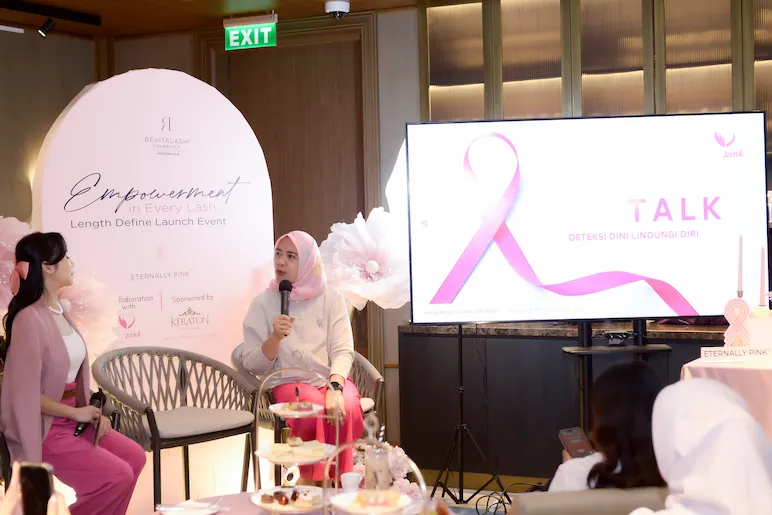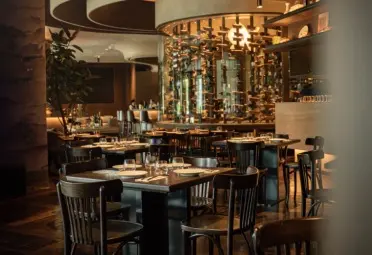The performance is titled Mel Ahyar Annual Show 2023: KULTULIBRASI. Located at City Hall, PIM 3, Mel Ahyar tries to offer a collection of interpretations of the dynamics of cultural acculturation and balanced regeneration between actors and consumers of culture. Cultulibrasi is about finding a sweet spot, the equilibrium of our cultural continuum. How do we find a balance and harmony in negotiating these conflicts for the sake of regeneration, relevance and legacy?
This performance answers RIKURIKU from HAPPA and XY, followed by the Mel Ahyar ARCHIPELAGO collection, and closed by Mel Ahyar Fall/Winter 2023-2024.

HAPPA and XY, two Ready to Wear brands which are also managed by MMAC, appeared as opening acts. Featuring the RIKURIKU collection, which is inspired by the story behind the story of the Asmat carving. RIKURIKU appears to carry the masculine passion of Asmat men who carve wood to leave their mark on earth, as a legacy and tribute to the ancestors. Seen in a framework motif of lush floral stripes as well as fauna, such as the curves of wood carvings. The earthy color palette is taken from Asmat's typical face painting which uses natural dyes: earthy red, powdered white clam shells, and crushed charcoal black.
The 'main dishes' from this event appeared later, namely the Mel Ahyar ARCHIPELAGO collection which carried Indonesian literature: Gedog Tuban Batik 'Onomatope', Lampung Tapis 'Mulang Tiuh', and Medan as The Melting Pot. All three present different angles of cultural regeneration. Gedog Tuban, which is hand-drawn batik on woven cloth, has a critically endangered status so Mel presents it almost as a 'whole' as the main raw material. Meanwhile, 'Mulang Tiuh' takes the craftsmanship of Lampung's tapis and intestinal embroidery on modern fabrics and motifs. Medan, on the other hand, was appointed as a melting pot of various North Sumatran traditional literature, such as Malay songket, Ulos Batak, and others.

As the final collection series, Mel Ahyar Fall/Winter 2023-2024 reflects Mel Ahyar's foresight in photographing the phenomenon of two-dimensional cultural dynamics that are always in conflict: the horizontal dimension which is a meeting ground for aspects of technology, geography to socio-economics, and the vertical dimension, namely cross-culturalism. generation (Baby Boomers, X, Y/Millennials and Z). The silhouettes in this collection are influenced by 1940-2000s fashion as well as kebaya – with bold, geometric and asymmetrical volume cuts. It can also be seen from the mix and match of various detailed elements of various decades in each piece. The details used are 3D flower details from mica, hand embroidery, gut embroidery, filter, and the effect of preserved flowers. Through this show, Mel Ahyar took the initiative to develop Nusantara literature as a source of renewable creativity. Because Mel believes that culture must be learned, not bred in the bone. “There is no younger generation who are born with culture immediately. Collaboration using textiles not only regenerates the craftsmen, but also generates customers from the Mel Ahyar brand," said the designer who is still active in visiting various regions to learn about this variety of textiles.
Furthermore, MMAC CEO Arie Panca added, for this regeneration process to run smoothly, special skills are needed. "In our opinion, an extinct culture is a culture that fails to regenerate. What survives is one that manages to find a balance point by accommodating the aspirations of cross-generations. Indeed, it requires sensitivity in knowing the literature, processing it, then modifying it respectfully as a piece of art towards the culture itself, and foresight to see the momentum of today's taste and market,” said Arie Panca met on the sidelines of the event.
The success of the KULTULIBRASI collection will continue to motivate Mel to dig deeper into the archipelago's literary treasures. "My vision is to make Nusantara literature a creative resource that I believe can always be endlessly updated through direct collaboration with artisans, as well as associations for the development of textiles and fostering craftsmen," concluded Mel with a smile ending the conversation.




 Hans Samuel
Hans Samuel
 Aug 14, 2023
Aug 14, 2023






